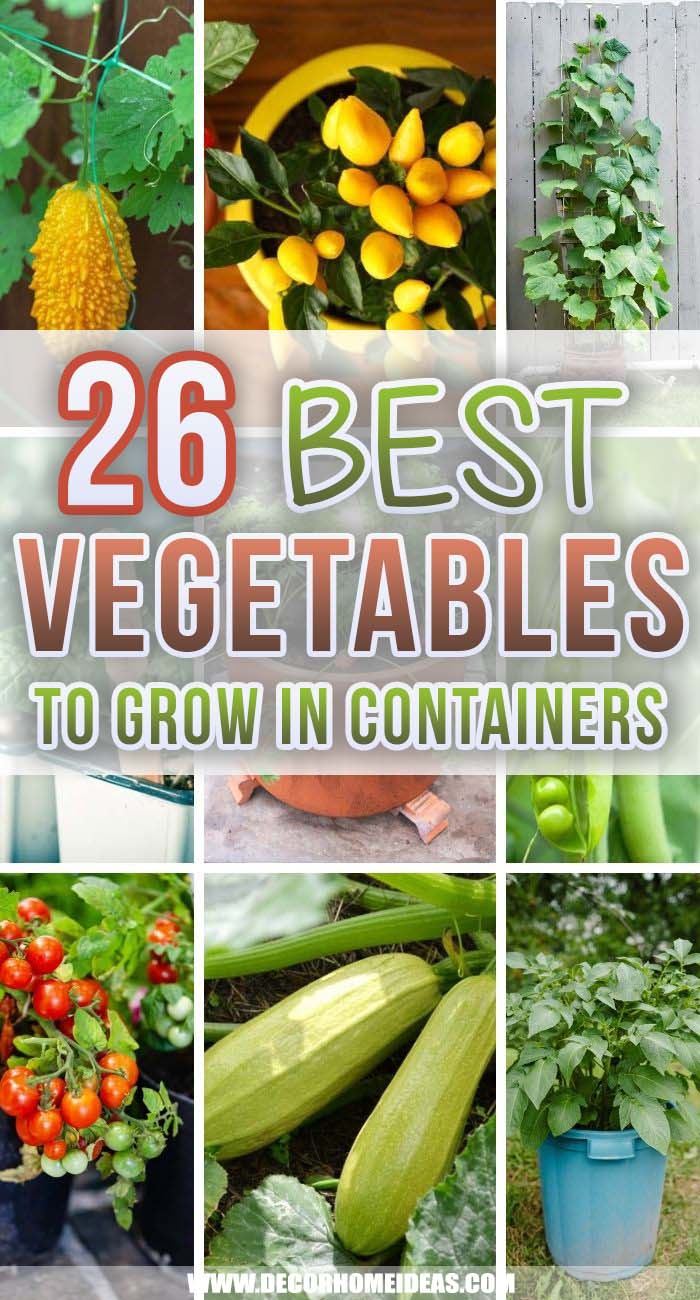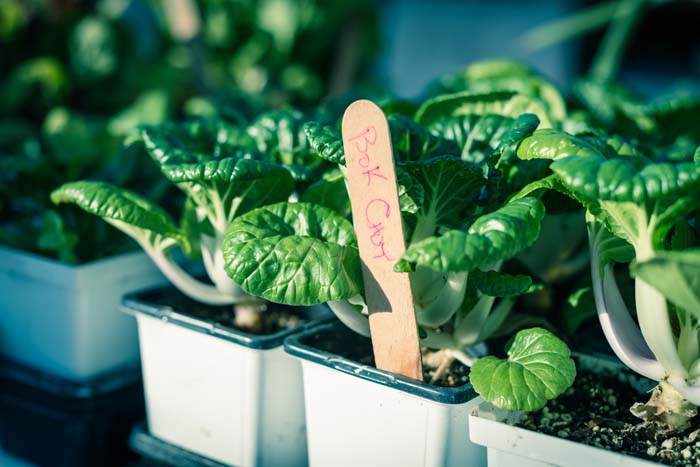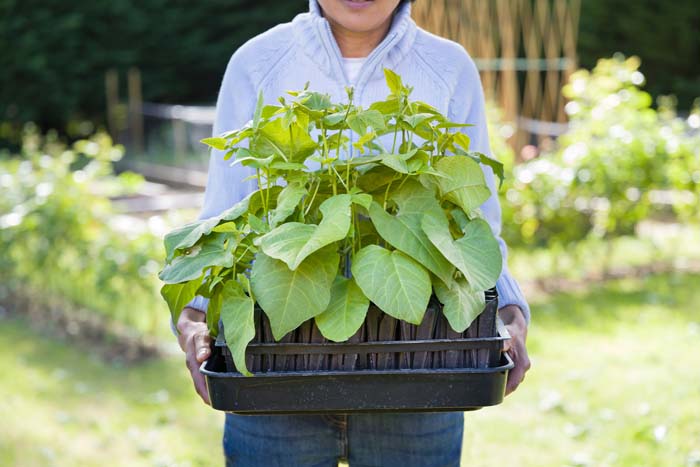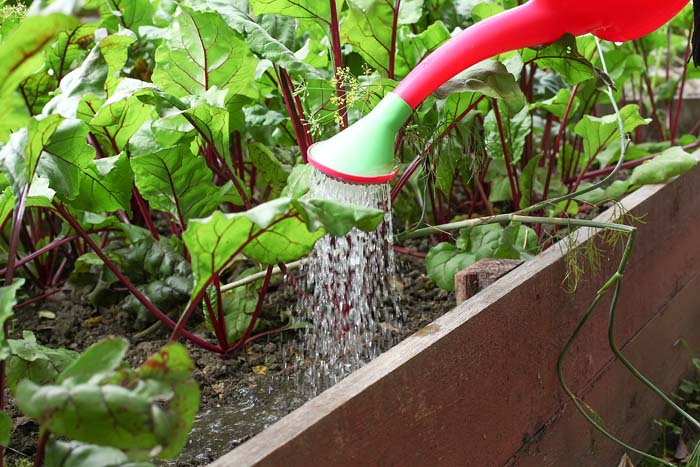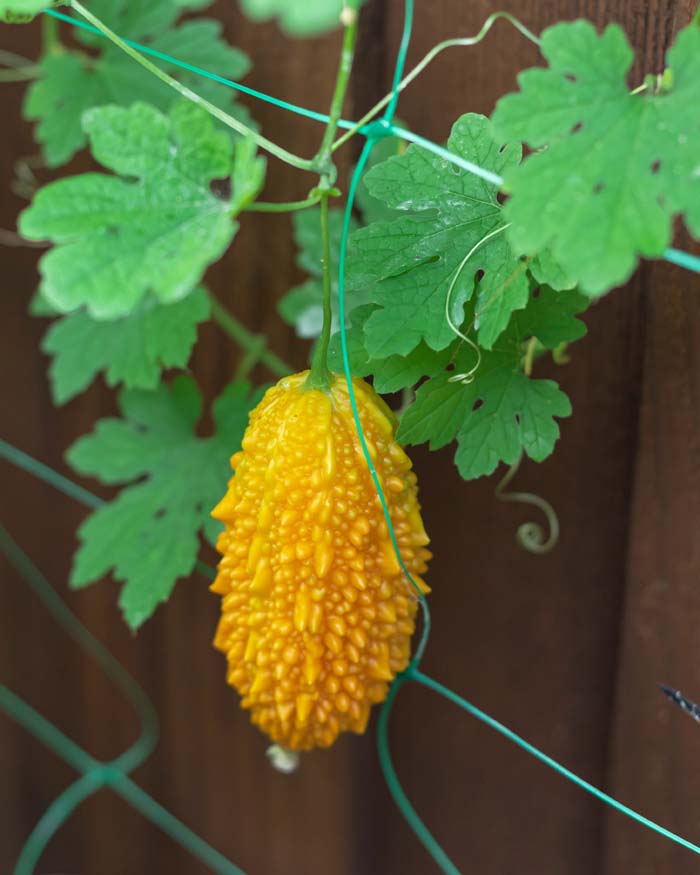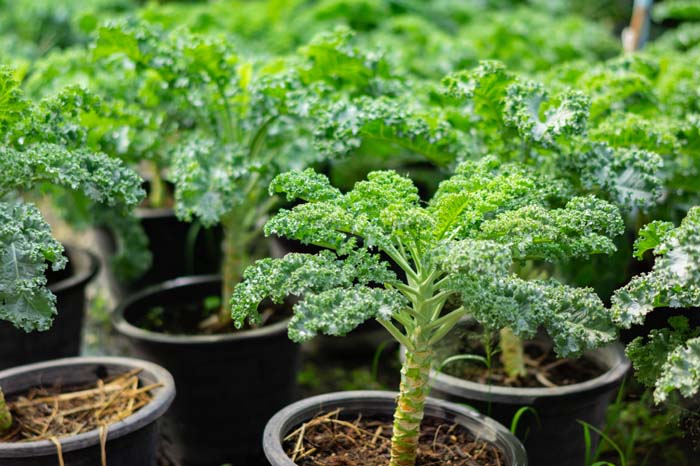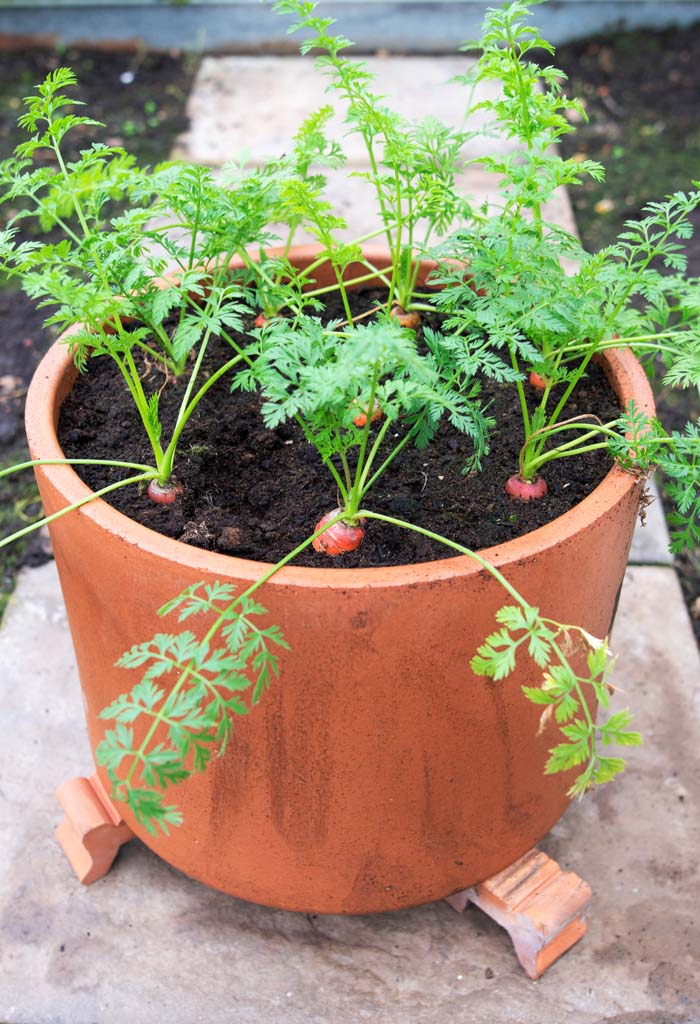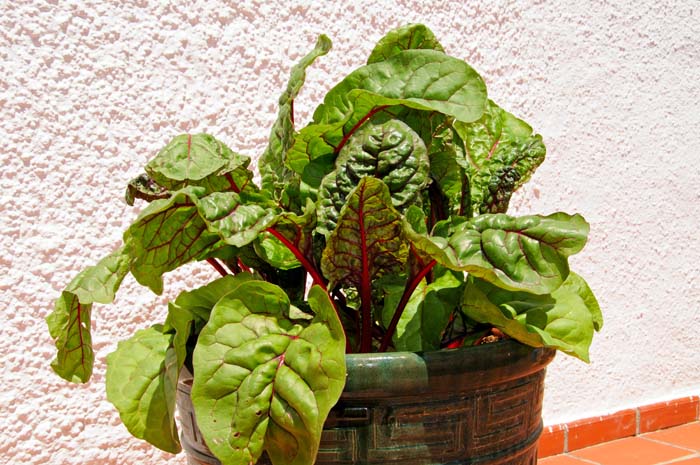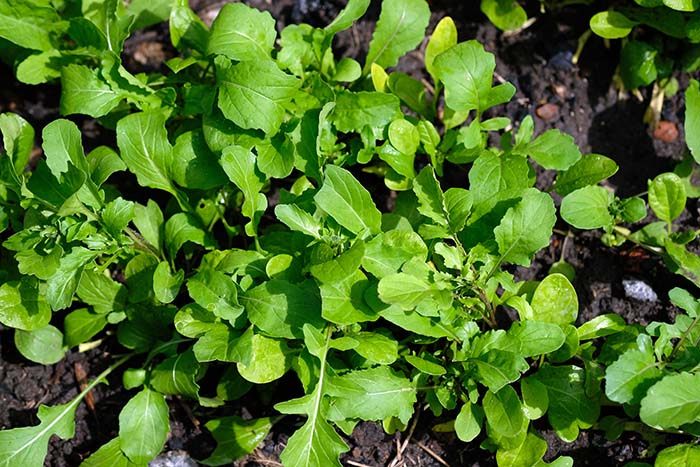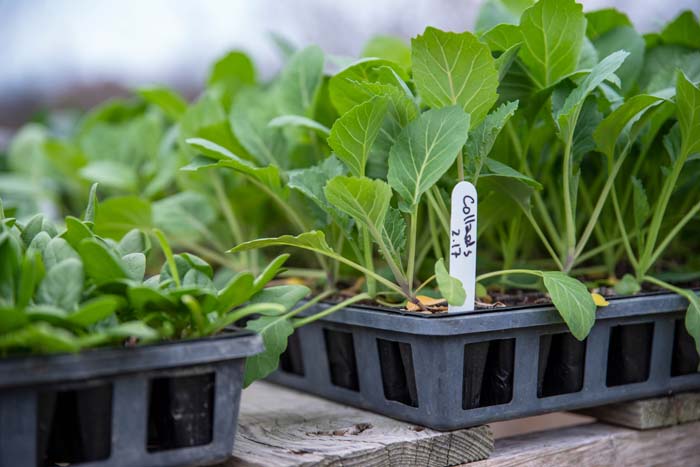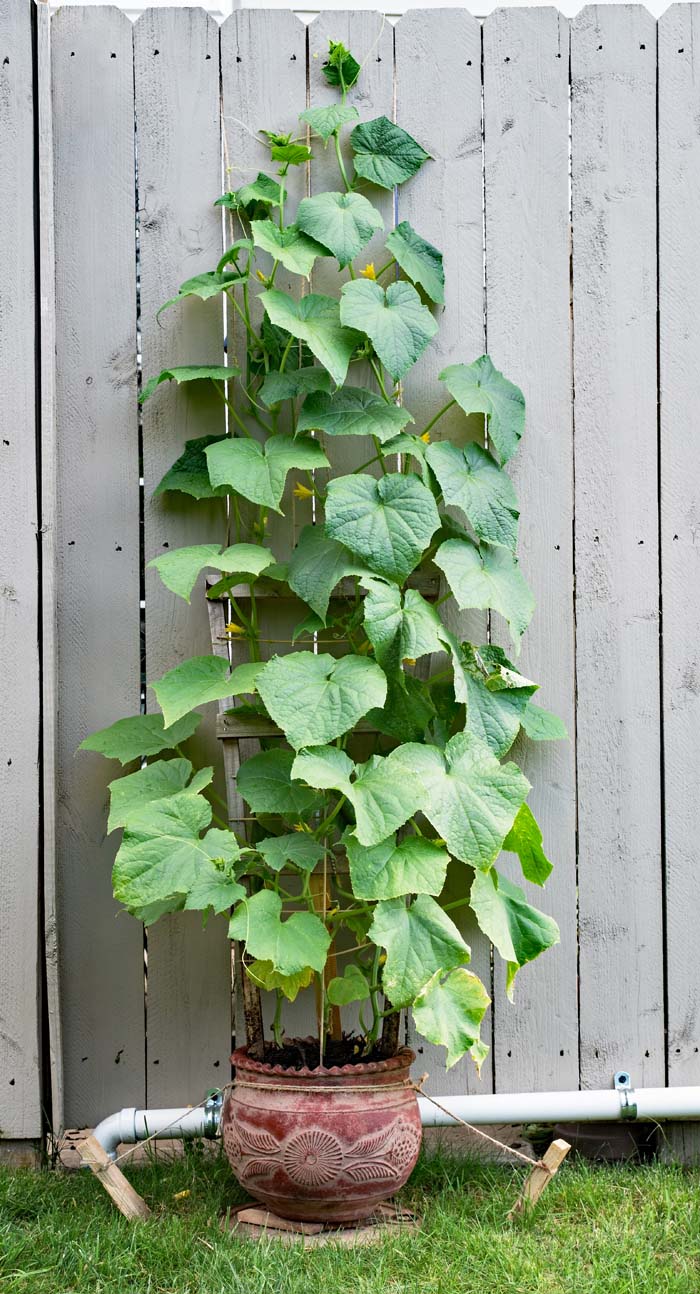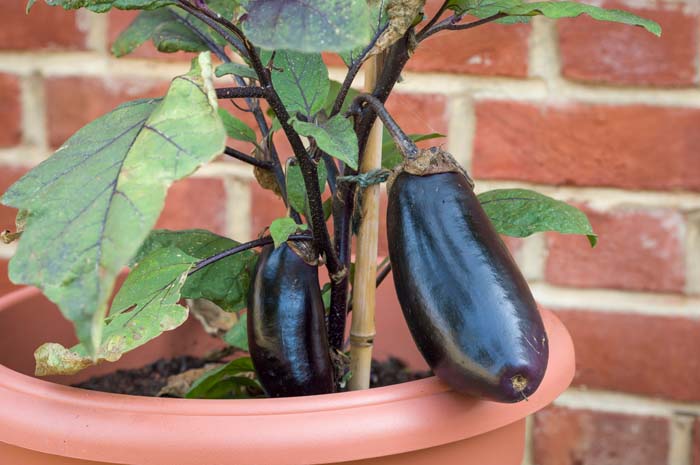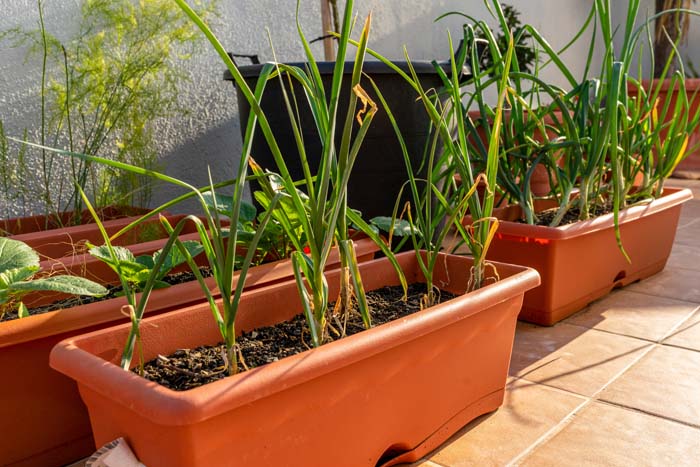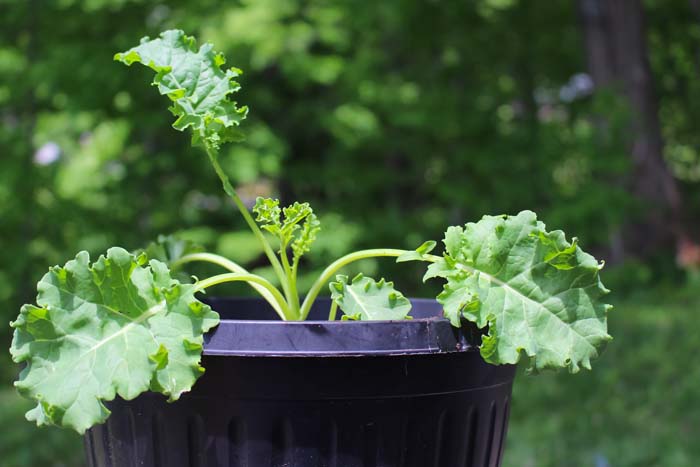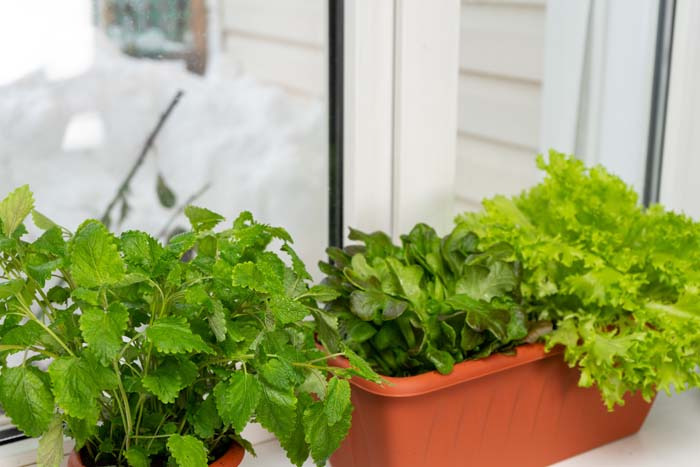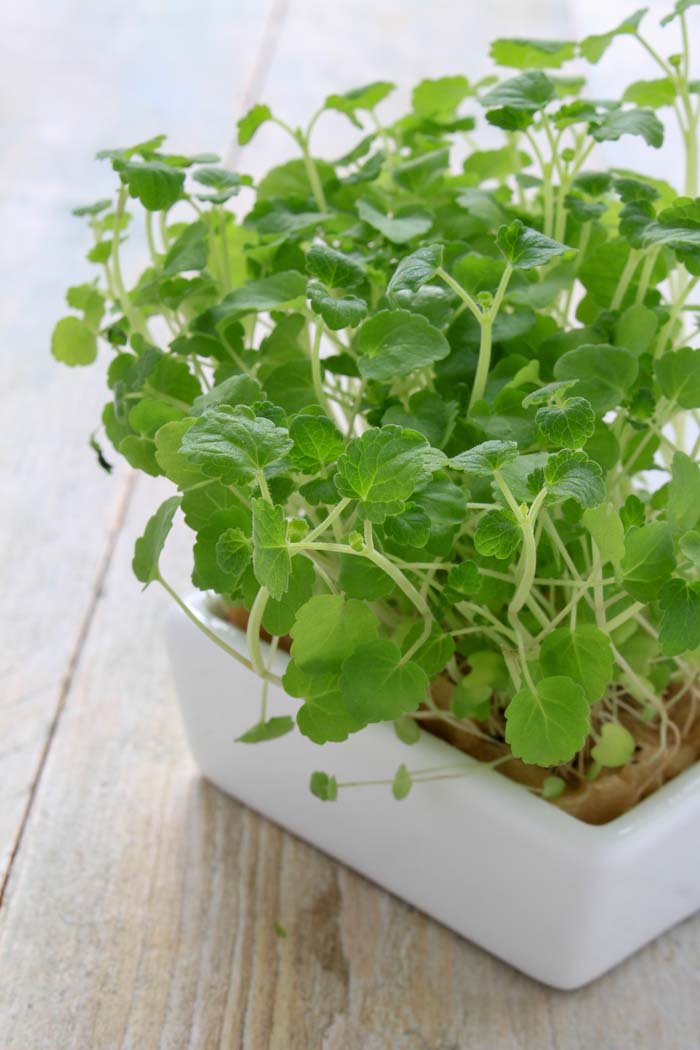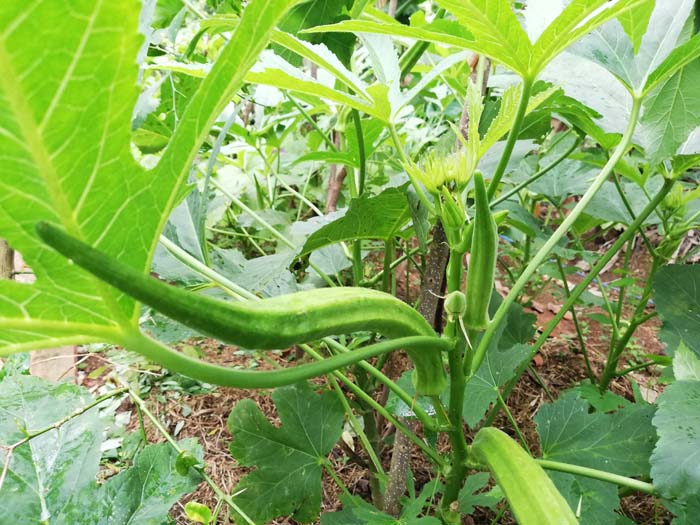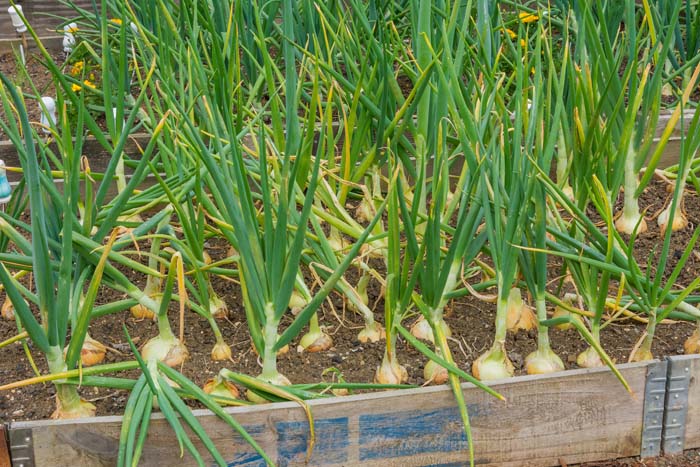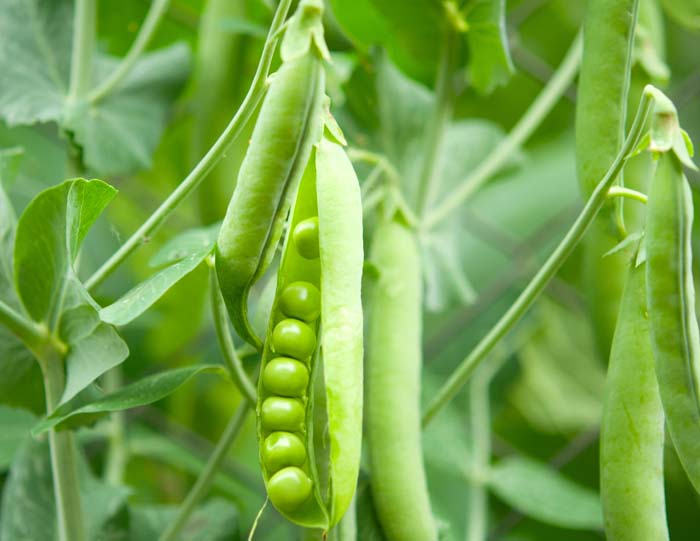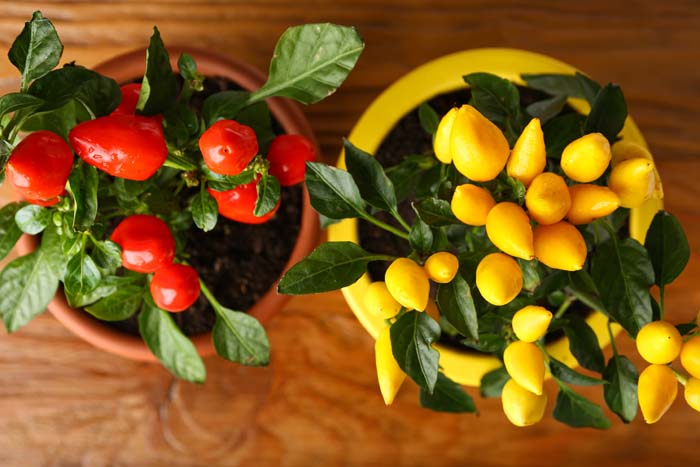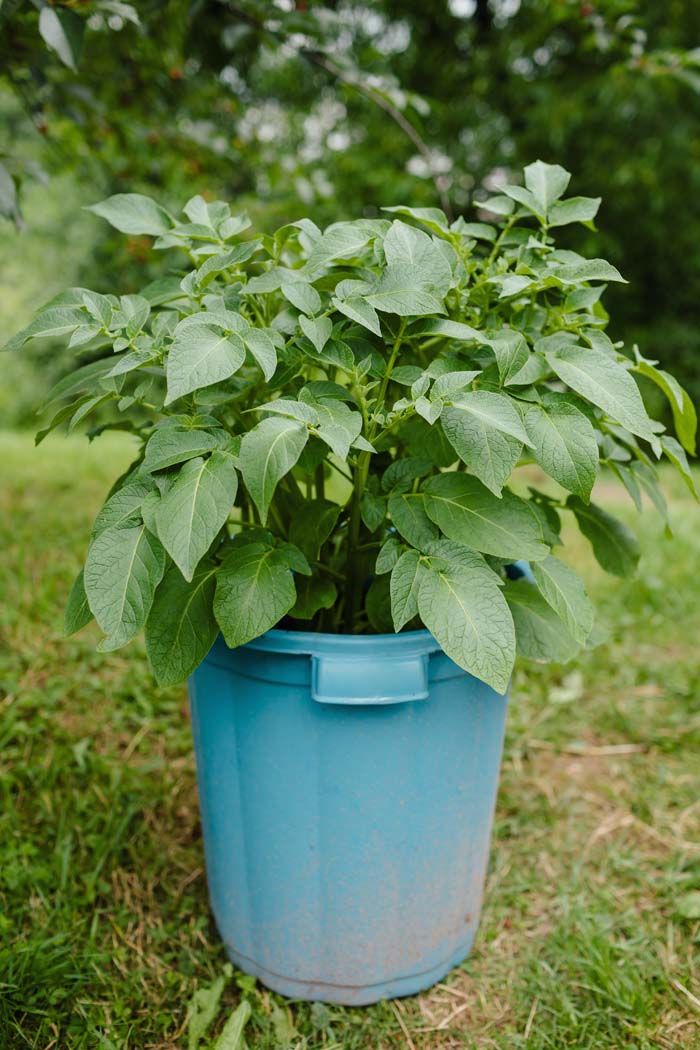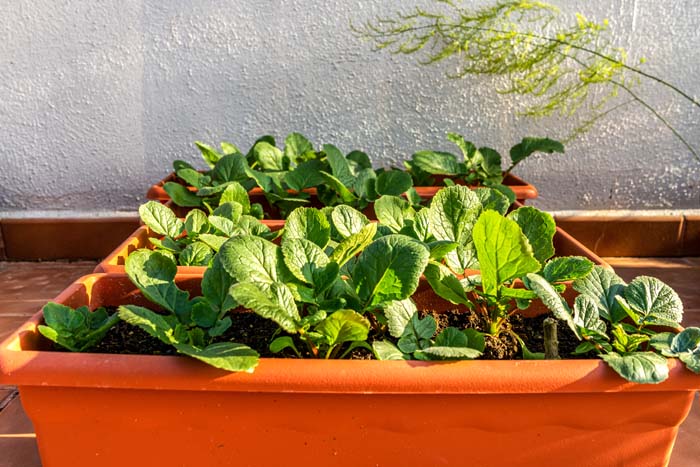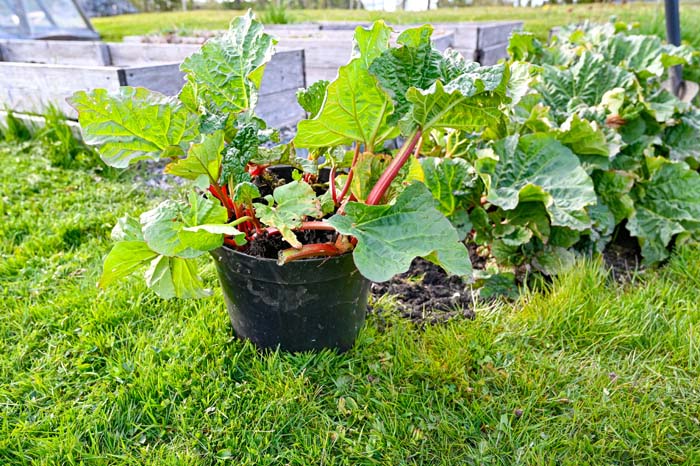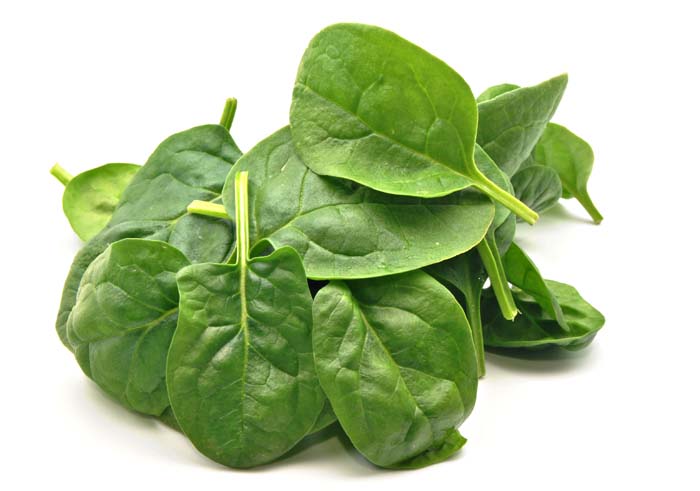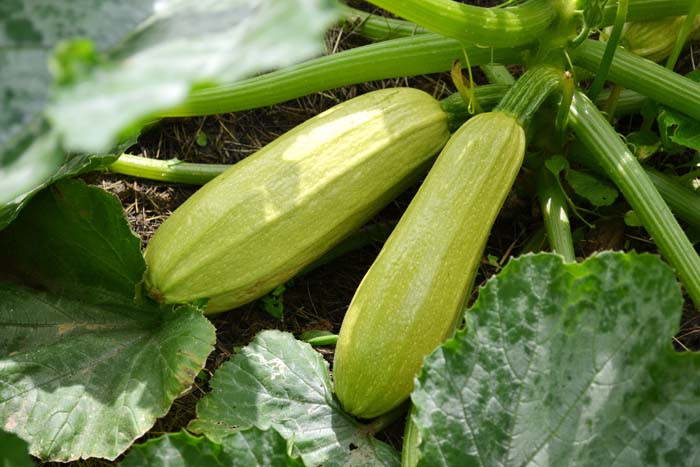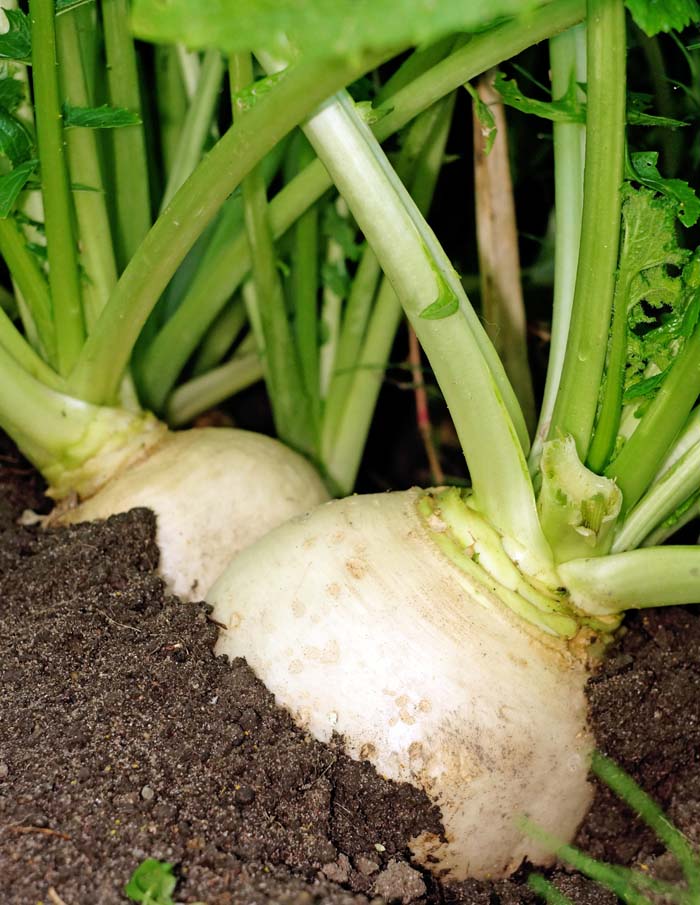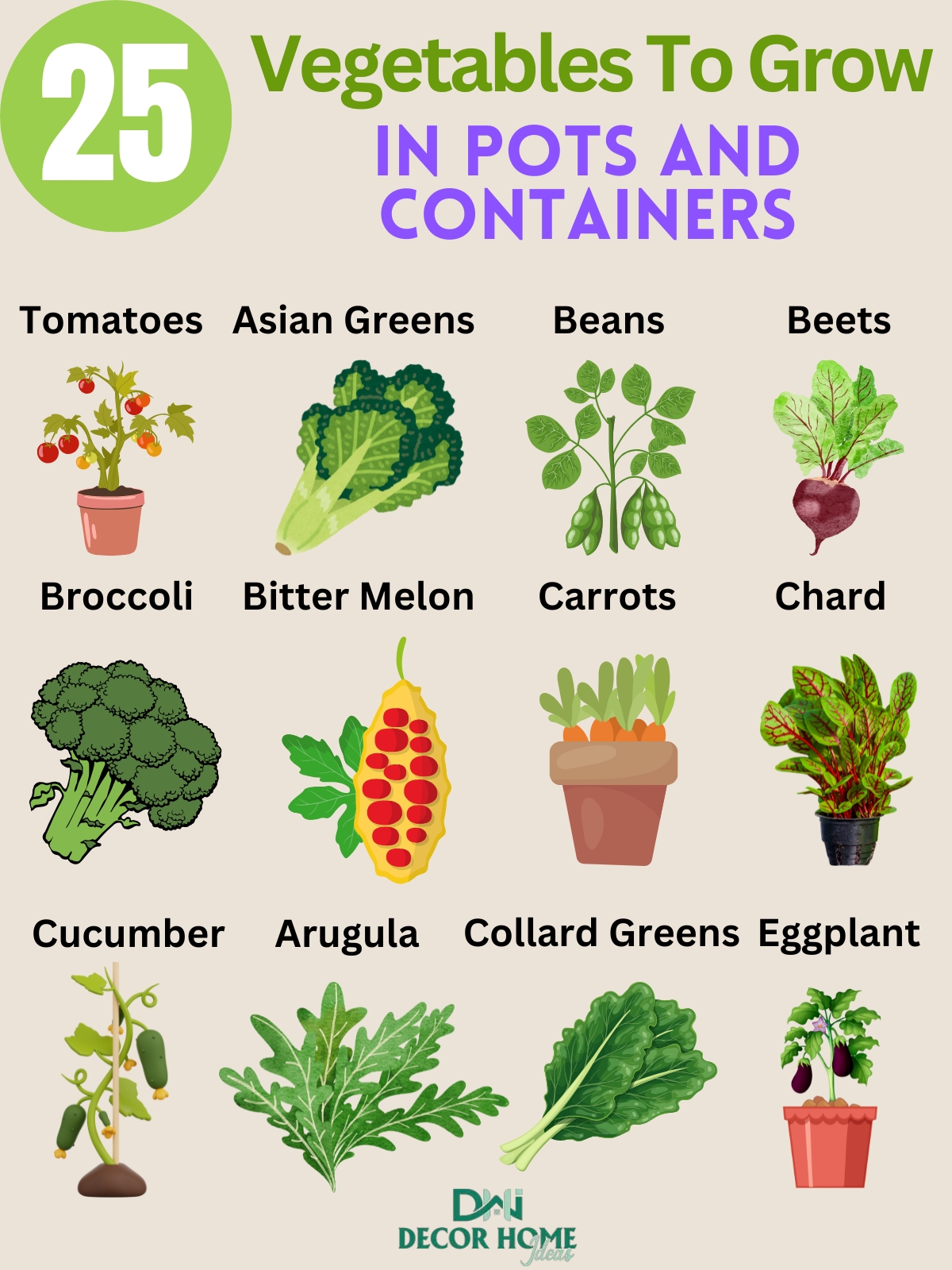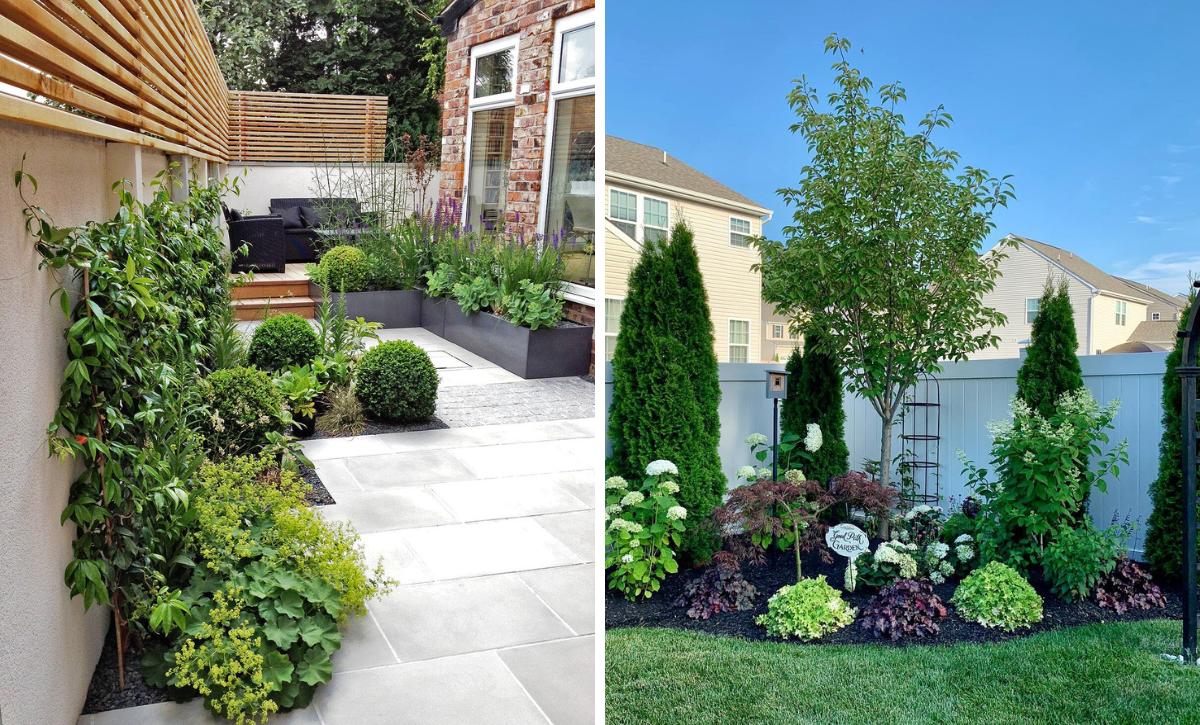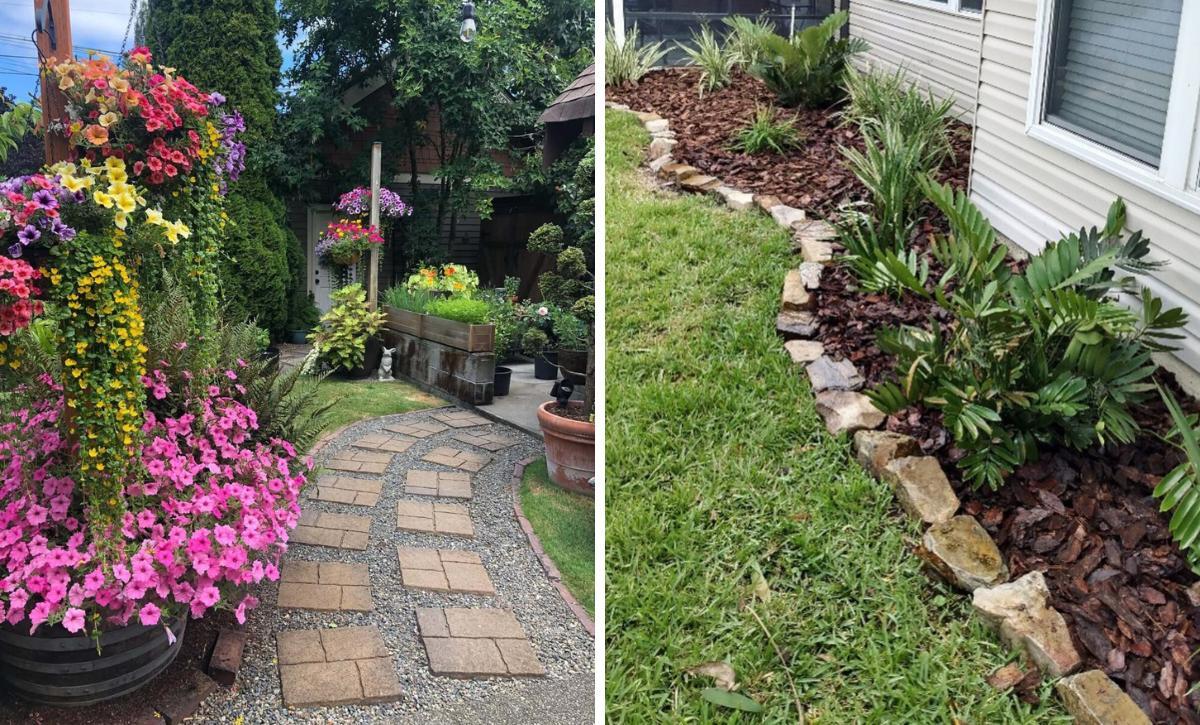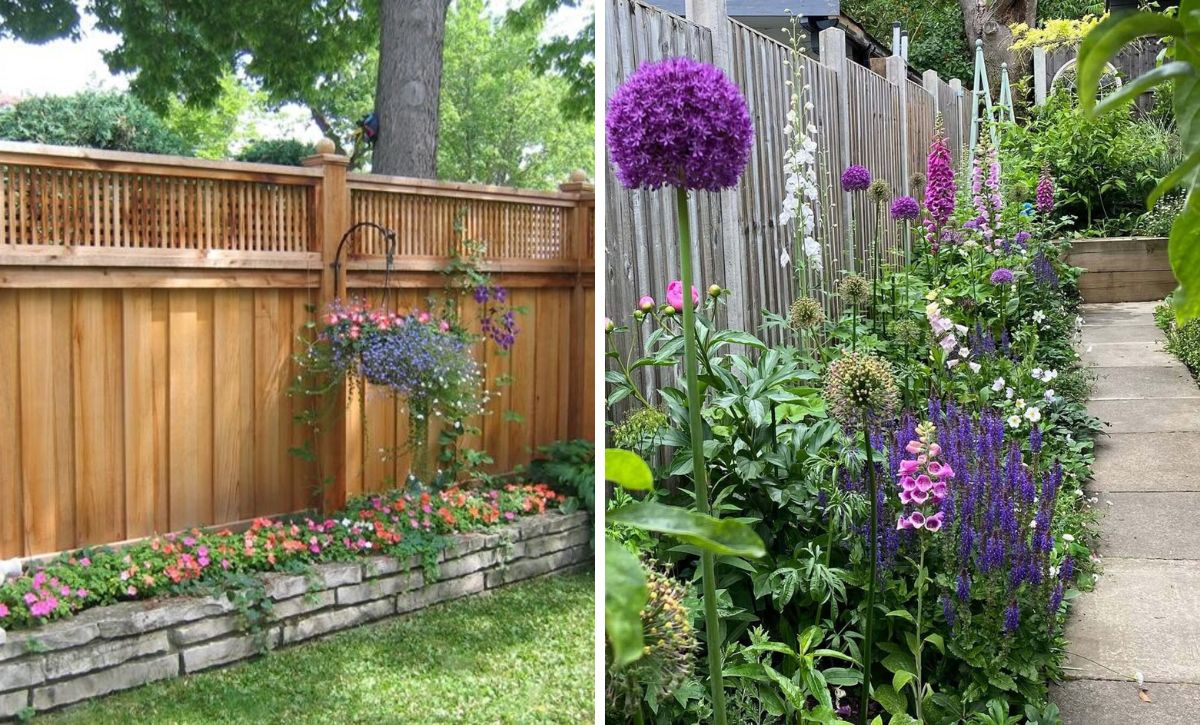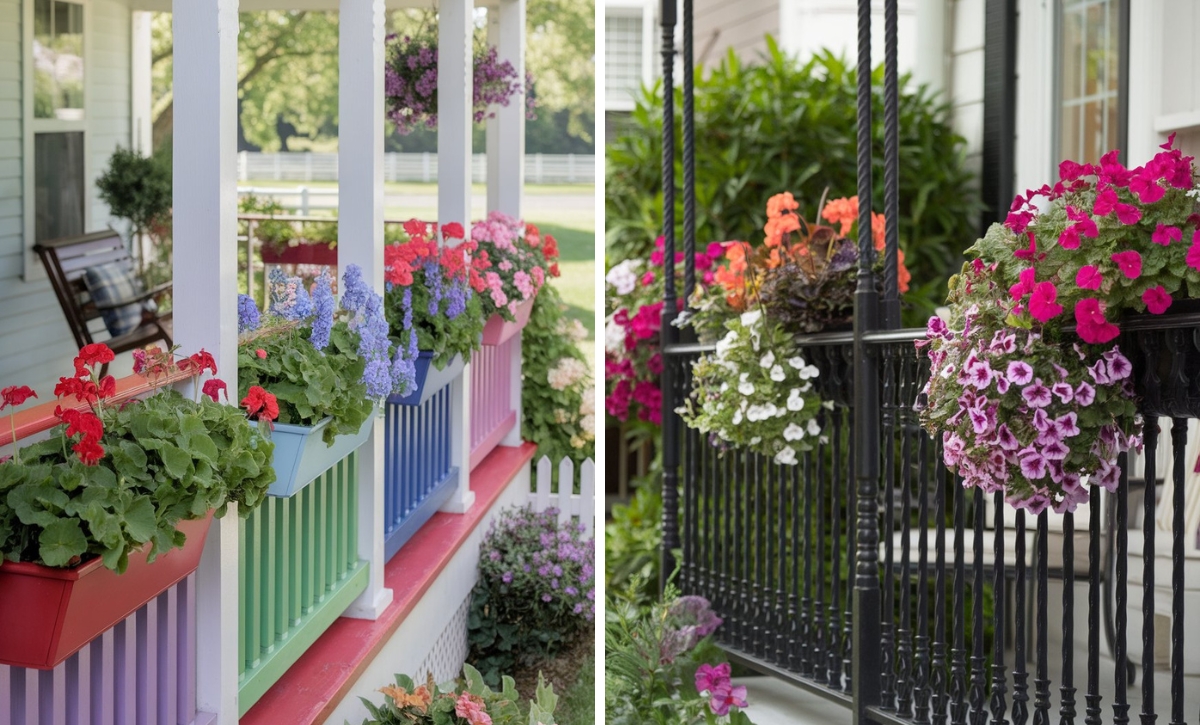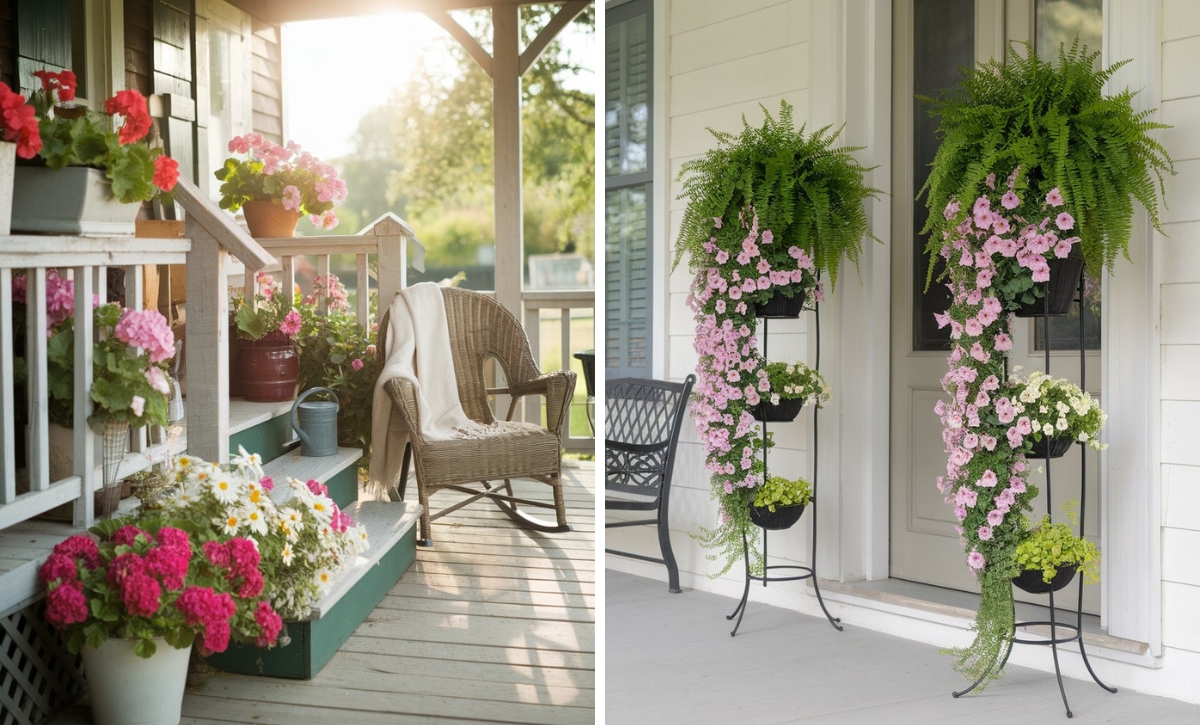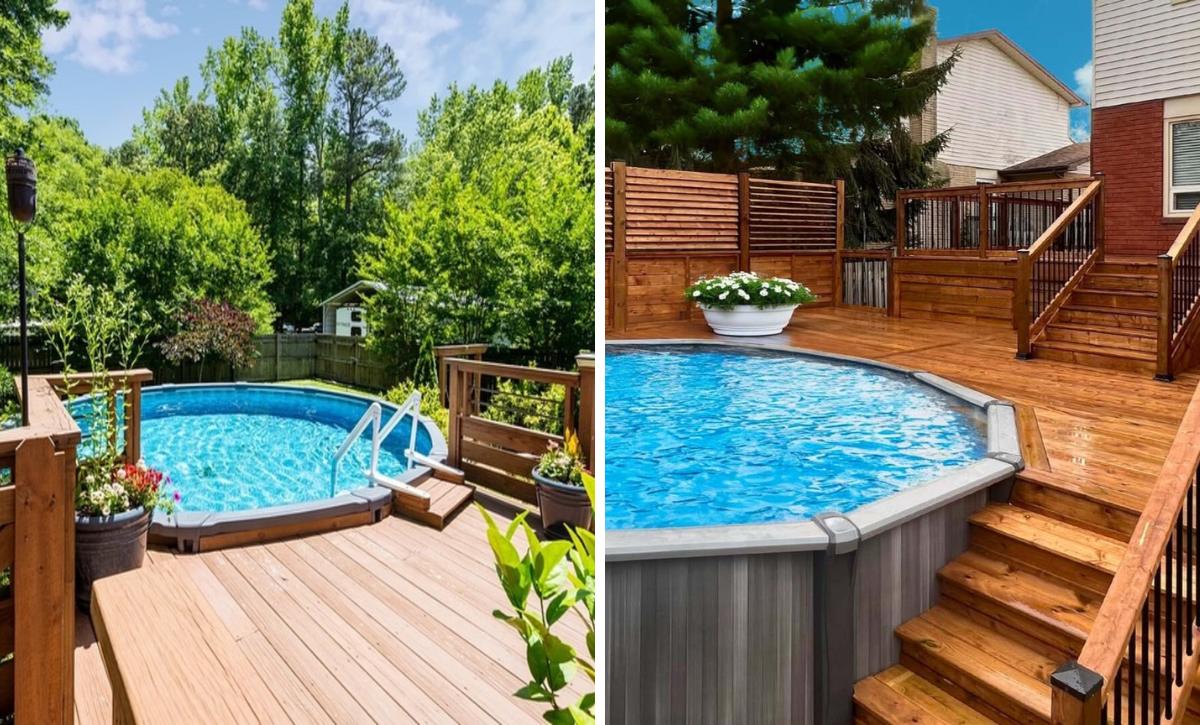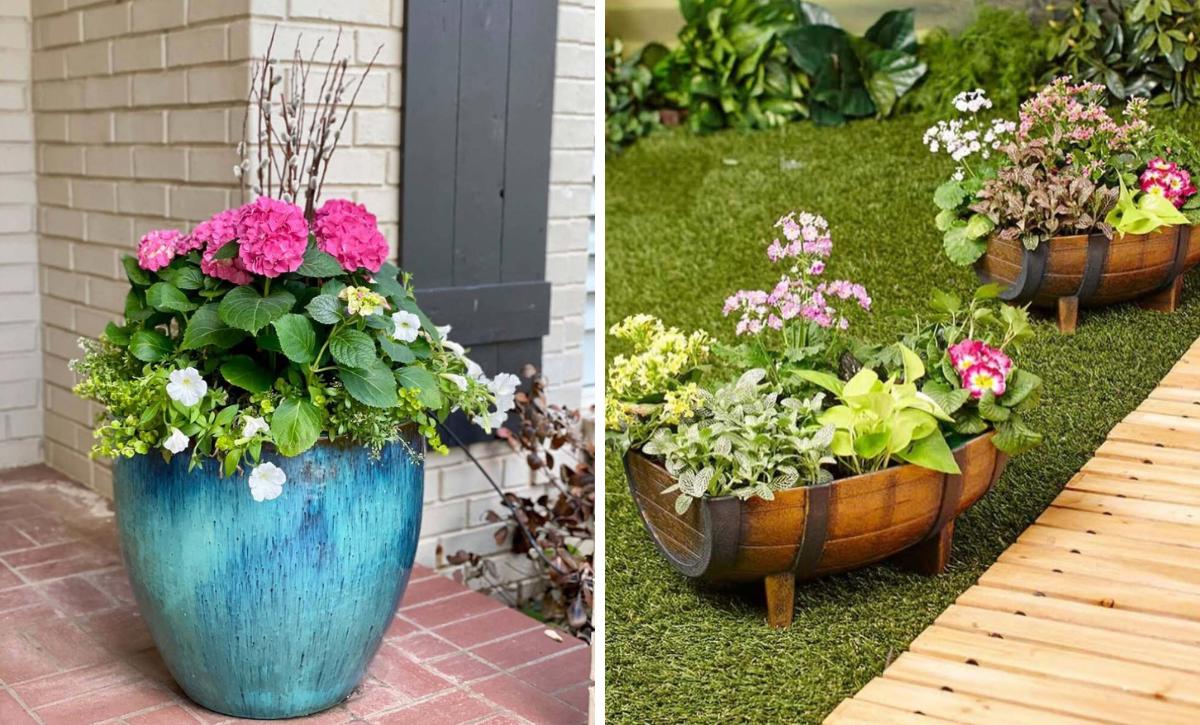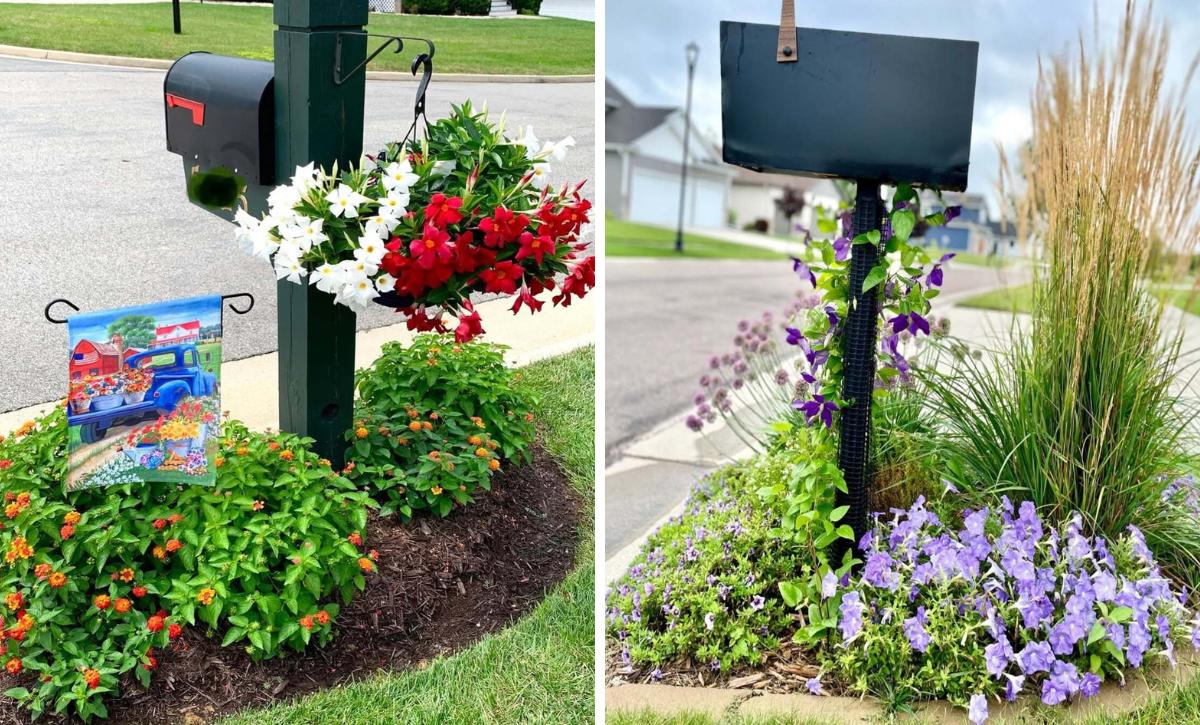Why is container gardening so popular even among families owning big backyards?
Well, growing vegetables in pots or containers let you reduce many of the problems posed by the outer environment. You can control the sun amount, the drainage and the weed growth.
The spread of critters is also minimized compared to in-ground plants. Are you already convinced of the benefits of container gardening?
Then it is time to take a look at 25 of the Most Productive Vegetables Grown In Pots and Containers.
1. Tomatoes
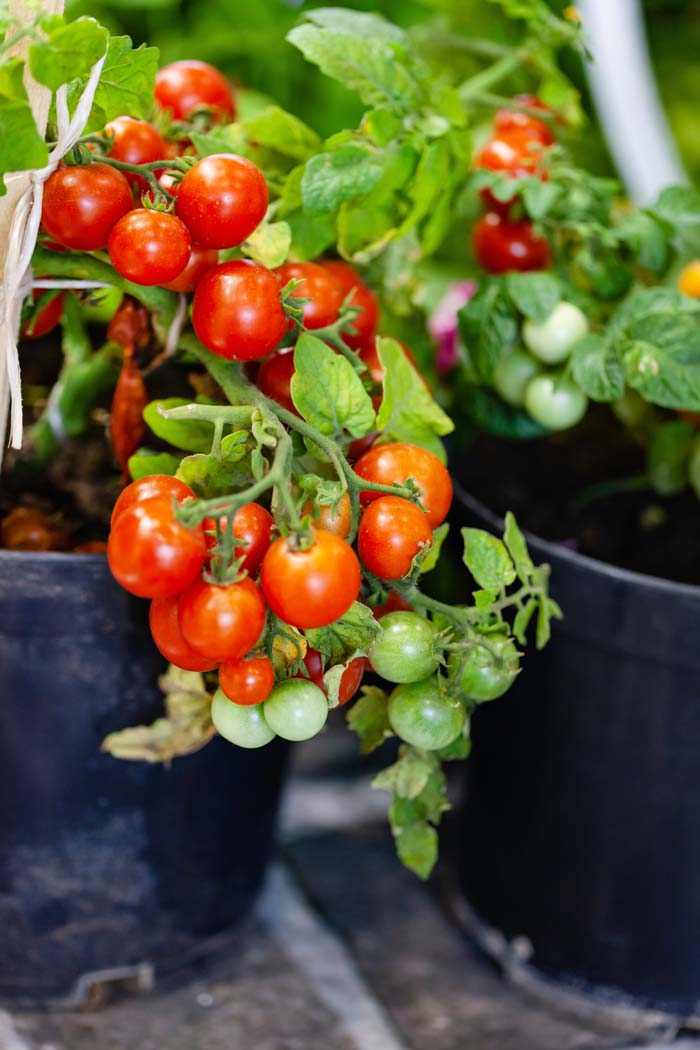
Growing tomatoes in containers is very easy and there are people saying that this growing method is more productive than when planted in the ground.
Bigger containers are needed where the root can develop and a place for a tomato cage or staking is ensured. The support is very important for some kinds of tomatoes which develop heavy fruit. If there isn’t a support, the vine can bend and break.
Follow this general rule- the larger the tomato variety is, the bigger the container should be. The cherry tomato kinds can be planted in smaller ones.
Before you plant your tomato seedings, make sure that you gradually acclimate them to the outside environment. Remove the seed leaves and the lowest set of true leaves before planting in the container. Make a deep hole in the soil to insert half of the seeding in it.
If you don’t grow plants from seeds, make sure to choose seedings that are short and without blossoms.
2. Asian Greens
Bok choy can be cultivated in USDA Hardiness Zones 2 to 11 which means that you can have your own supply of this leafy green vegetable.
Bok choy is perfect for container gardening because you can control the bolting which is the common problem of in-ground gardening. Furthermore, pests are kept away and all possible diseases.
The best containers for bok choy are conventional which offer drainage holes and from material that keeps the moist for a longer time. Bok choy likes good drainage and moisture.
3. Beans
Bean varieties grow very fast and that can be one of the family activities this year- to plant seeds in containers and watch them grow.
Depending on the type you get, you can grow a vined or bushy plant. Growing beans in containers is useful not only for gardeners with small spaces but also for better growth control of the potted vegetable. You can protect the plants from frost if you go for early growth.
The number of plants you can put in one container depends on the pot diameter. In all cases, you should ensure a distance of 12 inches between the seedings. Once your seeds germinate, make sure that you water them regularly.
4. Beets
Beets taste best pickled. So if you are not lucky to have a vegetable garden, grow them in a container. The most important thing about successfully growing beets is the container. It needs to be at least 10 inches deep so the roots have room to grow and stretch.
They also need to be planted three inches apart to have room to mature. Beets love cool weather combined with sunshine. You can grow them in fall, winter and spring under a shelter such as a greenhouse.
5. Bitter Melon
The bitter melon can be easily grown in containers like the cucumber and the squash, however, it becomes quite tall so you need to ensure there is good support. Once it reaches 5 m height, the vine has to be redirected.
Plant the seedlings in a deep pot, approximately 16 inches, and place the container in full sun to ensure good production. Water regularly and keep the soil evenly moist to ensure a good yield.
6. Broccoli
Another vegetable you can grow in a container and enjoy frequently fresh taste is broccoli. One rule you should follow- plant only 1 broccoli in a pot since it spreads wide. Avoid planting in black containers because they keep the temperature high and that is harmful to the plant.
Broccoli requires a bit more care than other vegetables in pots when it comes to fertilizing. Make sure that you regularly feed the plants with nitrogen-rich fertilizer and also water frequently.
Pests can be a problem so when planting more than one container of broccoli, space the pots at least 1 meter apart to prevent
7. Carrots
Care for raddish and carrots when grown in a container is similar. The pot for the carrots needs to be deeper since they develop longer pods. The minimum container depth is 12 inches and the spacing between seedings – 2 cm.
A gardener’s hint for growing successfully carrots from seeds is to keep the soil moist to prevent the roots from splitting. However, avoid soaking because that can be damaging.
8. Chard
Chard leaves enjoy with their attractive glossy look and a mild taste. If you grow it in a container, you will add the colorful leaves to the fresh salads in 8-10 weeks from planting.
Sow it in mid-summer to enjoy fresh chard during autumn and winter. The key to growing chard successfully from seeds is to keep the plants well watered.
9. Arugula
Arugula is grown in containers not only for its edibility but also for its beautiful look. You can grow it in a pot on the balcony.
A pot 8 inches deep and 6 inches large is perfect for it. Its size will also let you easily move it when it spends more than 6 hours in direct sunlight, preferrably in the morning sun.
The leaves of arugula are spict and its flowers sweet.
10. Collard Greens
Growing perfect collards in a pot is possible as long as you plant them in a bg container. It should be at least a 3-gallon pot.
Plant the seeds in spring and watch them germinate only in a few days. The key to increasing the production of sweet big leaves is frequent watering and a good potting mix including nitrogen. Lots of sun will also be helpful for the plants to be very productive.
11. Cucumber
There are many people acknowledging the advantages of growing cucumbers in containers. That gives the opportunity to control humidity, clean them from weeds and place them easily in the best spot.
Cucumbers are one of the fast-growing editable vegetables. You can find two main types which are both good for salads and can grow in containers. One of them is a bush type that is mostly used for pickling. The other type is vining and requires a trellis or a tomato cage for support.
12. Eggplant
Eggplant is great not only as an edible vegetable but also as part of the landscape. The combination of large green leaves and purple fruits is eye-catching and calming.
Most of the varieties develop dense foliage and heavy fruits, hence they are not suitable for container gardening. The best types of cultivars are Hansel and Fairytale which are compact and very tasty.
13. Garlic
Growing garlic in a container is far easier than in the ground. You need to pick up a pot that is at least 10 inches deep which will let the roots grow and spread normally. Space the cloves four to six inches apart and put them in the hole with the pointed side facing upwards.
Place the container in a sunny place- the plants need at least 6 hours of full sun. Water is good once a week. If the soil becomes too moist that can cause rotting.
14. Kale
Kale has become very popular recently because of its health benefits. You may want to try growing it yourself instead of buying it at an expensive price.
Kale is easy to grow in a pot alone or even with perennials and flowers. Kale likes cool weather so harvesting should happen before hot summer.
Choose a sunny place for the container where the kale plants can get at least 6 hours of sunlight. Soil should be well-draining and rich.
15. Lettuce
You can enjoy a fresh salad of lettuce grown in a container. Plant the seedings in early spring or choose a variety that withstands the summer heat.
Gardeners give a tip about extending the harvest of the lettuce- move the container to a cooler place to protect it from the harsh sun. Lettuce does not need so much sun, only frequent watering.
16. Mustard Greens
This is probably the only vegetable you can easily grow even in winter. Mustard greens are tough to low temperatures, edible and very nutritious.
The roots of the mustard green are shallow but the plants are large so you need anyway a container of a good size.
You can cut the outer leaves of the mustard greens to add to your salad and leave the inner part of the plant to continue to grow. Once the weather becomes too hot, it is time to harvest it because the mustard greens become bad tasting like most the leafy greens.
17. Okra
Unlike the leafy vegetables, the okra likes the heat and this is the most important factor in having a good production.
It easily grows in containers which are of a big size, at least a 3-gallon or larger. Black containers will attract and keep the heat and that will be appreciated by your okra plants.
Plant the seedings when the danger of frost has passed. The best location for your container with okras is full sun for at least six hours a day.
18. Onions
There is not much difference between growing onions in the ground and in a pot. Before you start, just pick up the right container. It should be wide or long enough to plant at least several onions. Similar to the garlic, onions like full sun for at least 6 hours. Watering, however, should be frequent.
To make sure that they get the right amount of water, check the top soil surface and if it is dry, give the onions some water.
19. Peas
You can plant your peas seedings twice a year- once in the early spring and once in fall when the weather is cooler.
You can choose from three types of seedings: snow peas, sugar snap peas and English peas. English pea is very sweet and enjoyable with its green color. The snow pea is mild when it comes to flavor and can be eaten both raw and cooked. The sugar snap pea is the cross between the first two and is edible when young.
Pea varieties are not only healthy for people but also for the garden since they enrich the soil with nitrogen. Hence the new kinds planted in the places of the peas become lush. Nitrogen is an important fertilizer that can be obtained in an eco-friendly way.
Choose the containers for the peas according to their type. Most of them require support that will stop them from bending.
20. Peppers and Chillies
Peppers are planted not only for their edible nature. They look very intriguing in containers, especially the orange, yellow and purple peppers.
The seedings do not become very tall which makes them perfect for pot or container growing. Prepare the soil, plant them and then place it in a spot with plenty of sun. Water moderately as peppers doesn’t like too dry or overwet soil.
21. Potatoes
You may want to try producing potatoes in a container if you are limited in space or live in an appartment. This growing method requires a deep container, a bucket for example, where you can cover the potato seeds well.
When you gather your first production of home-grown potatoes you will enjoy a different taste than those bought from the grocery store. The freshly picked potatoes are with higher water content and fresh bitter flavor.
22. Radishes
Radishes grow easily and quickly in containers. They don’t need much space or depth, only a shady place to avoid bolting.
You can grow your radishes from seeds directly in the chosen container. There are types with stronger flavor and bigger pods.
23. Rhubarb
Like most vegetables, rhubarb can also be grown in a container. You can plant one seeding in a medium-sized pot, however, it should be deep enough because rhubarb develops a large root system.
Once your plant is acclimated and healthy, you will enjoy declicious desserts and preserves for ten years. To make sure that you have set the right conditions start with the right pot that has drainage holes.
Place the container with rhubarb in full sunlight for best results. Water the crown until it is wet. Try not to harvest the plant until the second year when it will be matured enough to sustain harvest and continue to develop.
24. Spinach
Spinach is a loved vegetable for its health benefits- vitamins A, C, iron and calcium and also for it is easy and quick to grow, even in containers.
To start with, choose a wide pot that will let you space out the plants. Fill the container with a well-draining soil. Spinach doesn’t like wet soil.
Once you plant the seeds in the soil, you will see them germinate in 5 to 14 days. If you grow you spinach in fall, place the pot in a sunny place. If you like to enjoy fresh spinach in summer, keep the seedings in a semi shady spot.
25. Squash
Squashes are easy to grow both in the ground and in containers. If you choose to grow them in a bucket or a pot, make sure that it is very large because vines and leaves cover a lot of space.
There are a few kinds of squashes to choose from. They differ in fruit size, taste and shape. A representative of the giant ones is the Cucurbita maxima, Honeybear is a small acorn squash which can feel perfect in a container.
When you acclimate the seedings, place the container in a sunny place and water it regularly.
26. Turnips
All parts of the turnips are edible. It grows very quickly and is appreciated for its rich nutrient characteristic (Vitamin A, C, B and Ca, P and Fe). Similar to most root vegetables, the most important part of growing the turnips in containers is the appropriate soil. It should be acidic and well-drained which will help the root develop unsplitted.
Choose a container that is 12 inches deep and with drainage holes. Provide the plant with enough sunlight- at least 6 hours per day to enjoy good production. Turnip needs to be watered generously at least once a week. In dry areas, that can be increased to 2 or 3 times.
Maximize your harvest with these highly productive vegetables perfect for container gardening.
Tomatoes, beans, and cucumbers thrive in small spaces, while carrots and beets grow well in deep pots.
Leafy greens like arugula, collard greens, and Asian greens provide a continuous supply.
Eggplant, broccoli, and bitter melon add variety, making container gardening both easy and rewarding!

